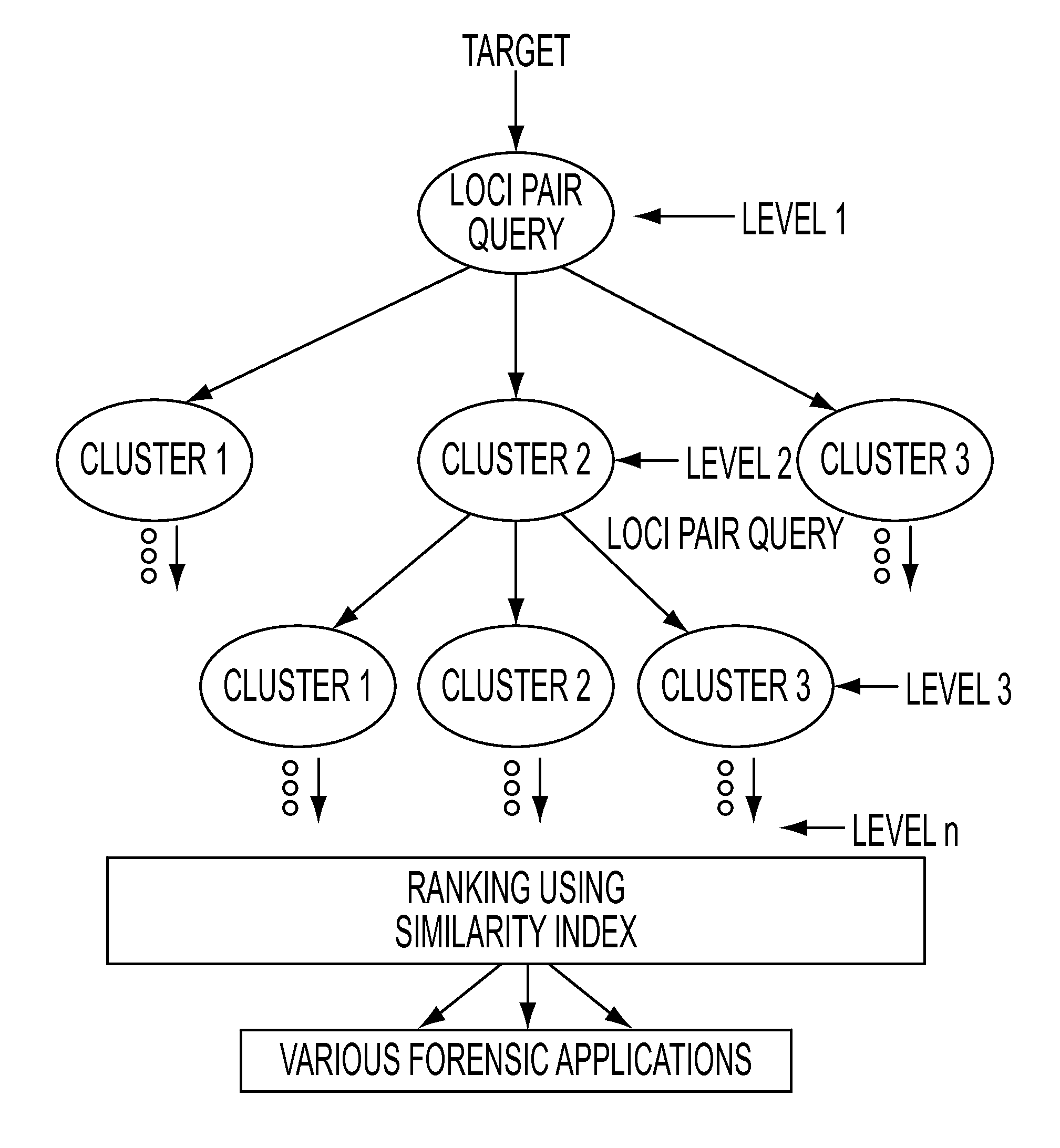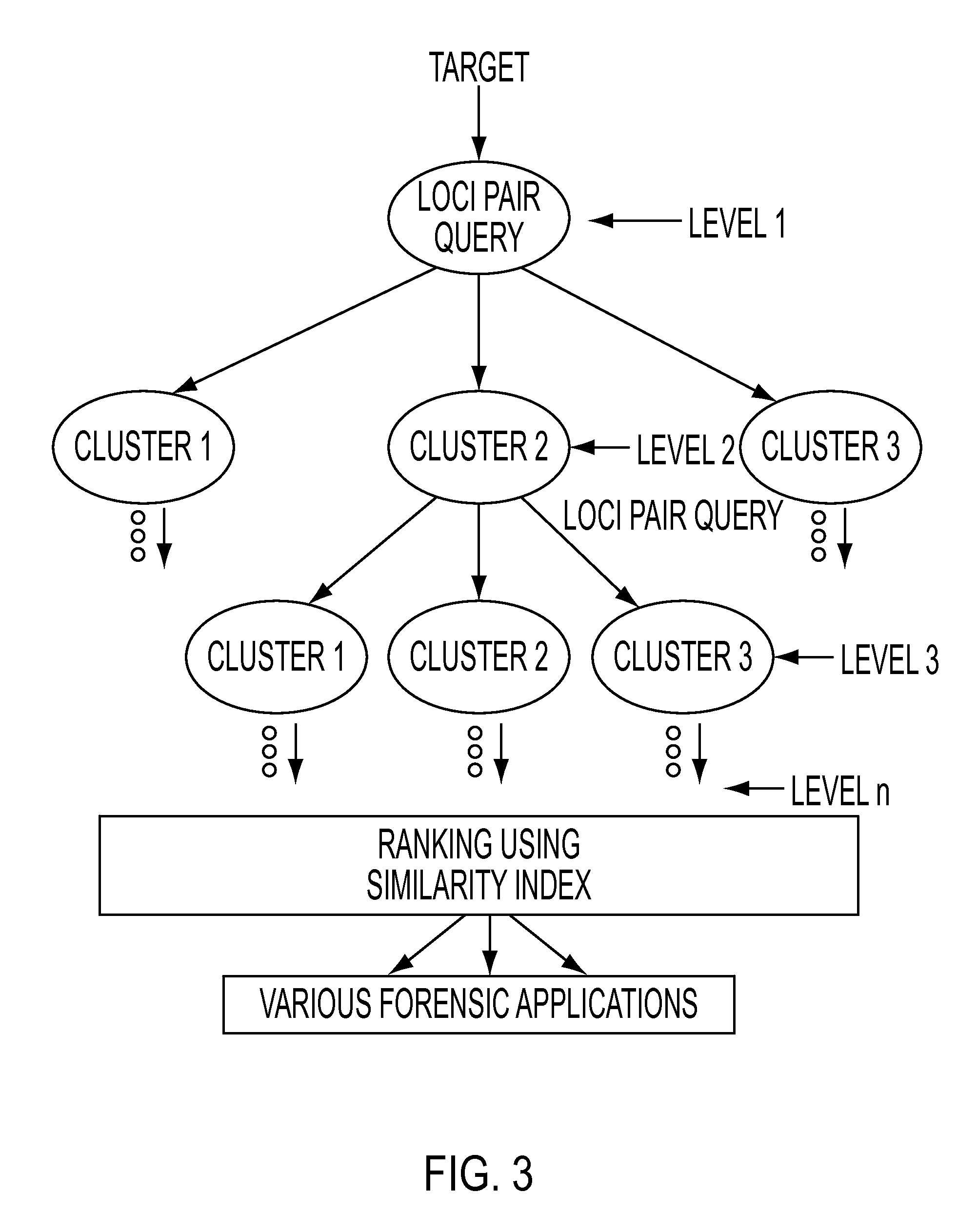Method and apparatus for classifying known specimens and media using spectral properties and identifying unknown specimens and media
a technology of spectral properties and methods, applied in the field of methods and apparatus for classifying known specimens and media using spectral properties, and identifying unknown specimens and media, can solve the problems of time-consuming and unneeded analysis of all 20,000 points, and failure to detect a machine componen
- Summary
- Abstract
- Description
- Claims
- Application Information
AI Technical Summary
Benefits of technology
Problems solved by technology
Method used
Image
Examples
example 1
A Vehicle
[0208]An object and other objects or information associated with the object can be represented or illustrated as a graph as shown by way of example in FIG. 14 where label 1008 may represent an object 1001. The object 1001 is represented as the central or an otherwise distinguished symbol. Other objects 1002, 1003, and 1009 are shown associated with object 1001 by lines or other graphic styles representing association, such as containment. (A motor is contained within a car). Any object may optionally be labeled by a name or other information as shown by the label 1008. By way of example, object 1001 can correspond to a car, and objects 1002, 1003, and 1009 can be the car's engine, transmission, and emissions control system, respectively. Objects such as 1002, 1003, and 1009 can have other objects associated with them, supporting a decomposition of objects to an arbitrary degree. By way of example the car's engine 1002 could have a fuel flow meter 1004.
[0209]An object and ot...
example 2
A Target Object
[0217]FIG. 17 displays an exemplary evidence tree using an on-screen graph representation generated by the prototype software for central object 95, a second example. The graph represents the decomposition of an object (with an assigned ID of 95) into its constituent parts and several associated trace evidence specimens—all shown as connected gray circles. Forensic measurements are represented as rounded rectangles—blue for spectral signatures, and orange for trace particle data. The perimeter of the circular, gray shaded area that underlies the object tree is the evidentiary data boundary—any data within or intersecting the large circle may be factually associated with the object represented by the centered small circle 95.
[0218]An objective of the prototype method is to utilize all evidence associated with an object and compare it to similar evidence of other objects or reference data to obtain forensic leads and assist with the identification of object source or ev...
PUM
 Login to View More
Login to View More Abstract
Description
Claims
Application Information
 Login to View More
Login to View More - R&D
- Intellectual Property
- Life Sciences
- Materials
- Tech Scout
- Unparalleled Data Quality
- Higher Quality Content
- 60% Fewer Hallucinations
Browse by: Latest US Patents, China's latest patents, Technical Efficacy Thesaurus, Application Domain, Technology Topic, Popular Technical Reports.
© 2025 PatSnap. All rights reserved.Legal|Privacy policy|Modern Slavery Act Transparency Statement|Sitemap|About US| Contact US: help@patsnap.com



